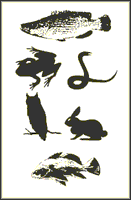Nebraska Cooperative Fish and Wildlife Research Unit

Nebraska Cooperative Fish and Wildlife Research Unit: Staff Publications
Date of this Version
11-23-2022
Citation
Ecological Indicators 145 (2022) 109711. https://doi.org/10.1016/j.ecolind.2022.109711
Abstract
Outdoor recreation provides societal benefits that are often measured by the amount of use natural resource systems receive. Still, the amount of resource use natural resource systems receive is often unknown or unstudied. Monitoring and quantifying resource use is often logistically difficult and costly but is paramount to optimize societal benefits. Identifying a simple and readily available metric that can indicate the quantity of recreational use of natural resource systems would benefit natural resource management. Using recreational angler participation data during an 11-year study period from 73 public waterbodies in Nebraska, USA, we developed a resource size-use model that demonstrates the ability of natural resource system size to indicate the quantity of recreational use they receive. We demonstrate how resource size-use models can estimate use for unsampled systems, produce broad-scale estimations of use, guide the allocation of resources, and predict how changes in resource system size may affect use. Resource size-use models provide opportunities to manage recreational use, which has been previously elusive for social-ecological systems.
Included in
Aquaculture and Fisheries Commons, Environmental Indicators and Impact Assessment Commons, Environmental Monitoring Commons, Natural Resource Economics Commons, Natural Resources and Conservation Commons, Water Resource Management Commons


Comments
Used by permission.